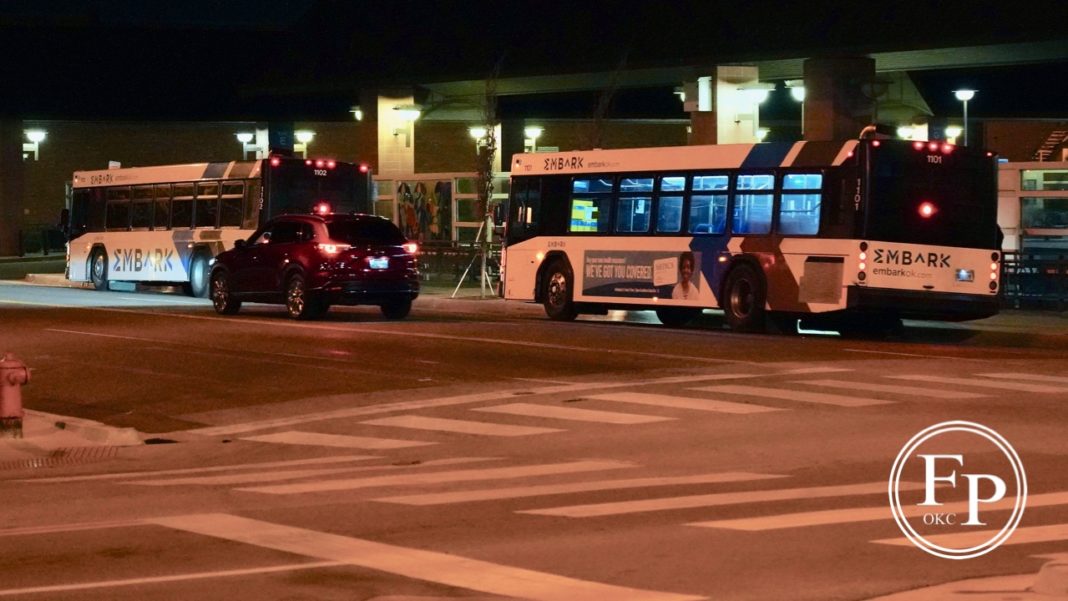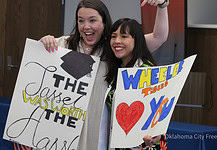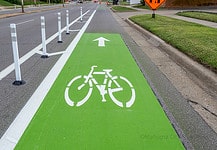Last Updated on January 25, 2020, 8:46 AM | Published: January 25, 2020
The Oklahoma City Traffic and Transportation Commission met Friday afternoon to handle some of the tedious and less attention-getting work of city government, including consideration of reducing posted speed limits and creating loading zones. The commission also held a lengthy discussion of speed abatement tools.
Speed abatement
A progress report on the City’s Alternative Speed Abatement Program, or ASAP, was delivered by City Traffic Engineer Stuart Chai and discussed by the Commission.
How the sausage gets made
Local government according to columnist Marty Peercy
ASAP uses tools such as speed humps and driver feedback signs to calm speeds in residential areas on collector roads. The city’s participation in ASAP is in the form of installation labor. This creates a cost for neighborhoods.
Thus far, the Traffic Department has received 51 inquiries about the program. However, no applications have been completed.
Today the Commission discussed the possibility of creating a pilot project for the program in order to demonstrate to neighborhood associations that the program is worth the investment.
Speed Limits
Speed abatement came up in another item on today’s agenda. A request was submitted to reduce the speed limit on West Hefner Road from North Rockwell Avenue to North MacArthur Boulevard.
Peter Usiukiewicz, the resident of the neighborhood who made the request, cited the recurrence of automobile crashes on this four-lane road.
Cycling advocate Tony Carfang addressed the Commission and shared the story of Max Krause.
Mr. Krause was cycling on this stretch of Hefner after cycling on the Lake Hefner Trail when he was struck by a police officer. Max suffered catastrophic injuries in the crash, including a stroke. Ultimately, Krause’s family made the difficult decision to remove Max from life support.
Carfang went on to make a strong case, not simply for speed reduction, but for lane reconfiguration. Carfang pointed out that this four-lane road could be re-striped in order to make it a two-lane arterial with a center turn lane and freeing up space for dedicated bike lanes
Much civil discussion followed. Chai’s reservations on the topic of lane reconfiguration seemed largely to do with associated costs.
Ultimately, the request to reduce the speed limit was denied. Chai explained that reducing the speed wouldn’t make any difference in the behavior of drivers.
Later, in a text message to Free Press, Carfang said, “While a speed limit reduction has its intentions in the right place, the traffic studies on Hefner demonstrated the fact that drivers choose a speed based on the psychology of the infrastructure, not numbers on a sign.”
He continued, “So I left the meeting optimistic since the conversation moved towards lane reconfiguration and broader infrastructure policy changes that actually result in safer streets.”
This writer muttered, “Not with that attitude,” several times.
Loading Zone
Audra Stone, Property Manager of BOK Plaza, brought a request to remove metered parking on the south side of West Main Street at Hudson Avenue and to establish a commercial loading zone there. A restaurant in that location receives deliveries from food-service companies and would like delivery drivers to have an easier time of bringing their wares into the restaurant.
Steve Willingham of Clarity Coffee, a popular business across Main Street from the location in question, came to the meeting to protest. He said that losing three parking spaces would have a detrimental effect on his business. He also pointed out other loading zone areas nearby.
City staff pointed out that among the 170+ meters in operation in Oklahoma City, the metered parking mentioned in the request had the 9th highest usage.
The request was quickly and quietly denied.
Columnist covering local government in Oklahoma City and Oklahoma County from May 2019 through June 2023.










